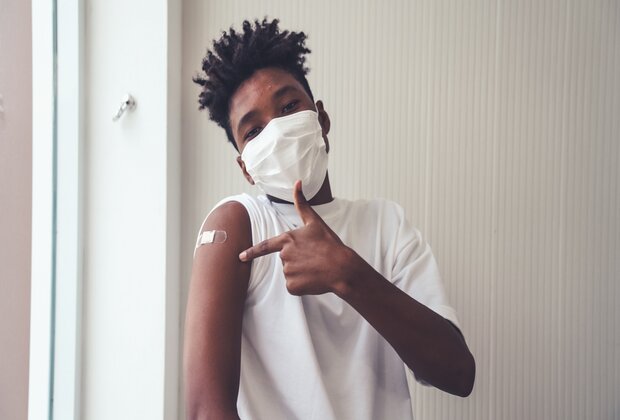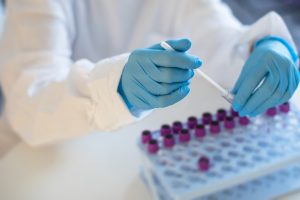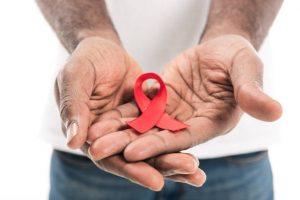South Africa has extended COVID-19 vaccination to adolescents aged between 12 and 17 years. In the week of 10-16 October 2021, this age group made up 14.7% of new COVID-19 cases reported, down from a peak of about 20% in the middle of the third resurgence.
As of mid-October 2021, children aged 10-19 years made up 9.2% of all cases of COVID-19 reported since the beginning of the pandemic.
Vaccination of adolescents may reduce duration of symptoms, limit transmission to others, and allow an earlier return to school and normal activities.
It’s particularly important for adolescents with underlying conditions such as diabetes, cancer, HIV and obesity. Our data at the National Institute for Communicable Diseases has shown that adolescents with these underlying conditions are at greater risk of death from COVID-19 compared to adolescents without underlying conditions. These underlying conditions accounted for 22% of adolescents admitted to hospital with COVID-19 but 60% of those who died from it.
Vaccination schedule
When the plan to vaccinate adolescents was announced, there were some key differences between the vaccination schedule intended for adolescents and that already in use for vaccination in those 18 years and older.
Firstly, adolescents will only be offered the Pfizer Cominarty vaccine. This is the only SARS-CoV-2 vaccine currently approved by the South African Health Products Authority for use in this age group (under Section 21 emergency use access). Adults can get the Pfizer or the Johnson & Johnson vaccine.
Secondly, adolescents will only receive a single dose of the vaccine, as opposed to the two doses administered to adults. The decision was cautionary as more safety information is accumulated for this age group.
Countries including the United States, Denmark, France, Germany, Ireland, Italy, Spain and Switzerland have already vaccinated many millions of adolescents. Their experience will guide countries that follow suit.
Safety
The Pfizer vaccine has been shown to be safe in adolescents between 12 and 17 years in North America and Europe. The side effects are similar in adolescents and adults. Myocarditis (inflammation of the heart muscle), a rare side effect of the vaccine, has been reported in Europe and North America, more commonly after the second vaccine dose. It occurred in 20-150 cases per million Pfizer vaccine doses administered, and was more common in males than in females. Most cases were mild and individuals recovered quickly with supportive care.
Effectiveness
The use of a single dose has raised concerns of limited effectiveness in reducing transmission while diverting resources from vaccinating older individuals – 40 years or older – who are at higher risk of severe disease and death.
Compared with adults, adolescents are more likely to have only mild or asymptomatic infections, less likely to suffer persistent symptoms following COVID-19 and less likely to be hospitalised or die from COVID-19. But they can transmit the SARS-CoV-2 virus to others, especially in settings where there is poor implementation of non-pharmaceutical interventions.
In a clinical trial in the US, two doses of the Pfizer vaccine were shown to be 100% effective in reducing all new COVID-19 infections among children. A single dose reduced all new infections by 75%.
A large study from Israel found that one dose of the Pfizer vaccine was 59% effective 14-21 days after vaccination. The effectiveness increased to 66% 21-27 days later, and 90% after the second dose.
An increasing number of studies, mostly among healthcare workers and their household contacts, are showing that there is a step-wise reduction in the risk of asymptomatic infection with the increasing number of Pfizer doses received. A study in England found a 40-50% reduction in the risk of asymptomatic infection among household contacts of healthcare workers who received one vaccine dose. The risk of asymptomatic infection was 70-80% lower reduction among contacts of health workers who received two doses.
The effectiveness of one dose was higher against symptomatic infection compared to asymptomatic infection.
Read more: COVID-19 in children: the South African experience and way forward
The effectiveness of one or two doses of the vaccine in preventing transmission from healthcare workers also depended on the vaccination status of the household contacts. New infections were fewer among contacts who were vaccinated with two compared to one dose or none.
It is therefore likely that the extent to which the one dose ear-marked for adolescents will be effective in limiting transmission to household members will depend on the extent to which everyone else in the household or around the adolescent is vaccinated.
It is therefore important that all adults – 18 years or older – are vaccinated to limit transmission of SARS-CoV-2 to and from the adolescents in their households.
This offer of vaccination should encourage conversation and discussions about COVID-19 vaccinations between adolescents and adults. The adults could use this opportunity to get vaccinated themselves and reduce their own risk of hospitalisation and death.
Key considerations
Perhaps the most contentious issue around vaccinating adolescents is one of vaccine equity.
Is it justifiable to extend vaccination to younger age groups when there are older adults who are not yet vaccinated and remain at risk of severe COVID-19 and death? There is an urgent need to understand the reasons why vaccine coverage in older adults has remained low. Is it poor access? Is it lack of knowledge or misinformation? Can adolescent vaccinations be leveraged to improve access in older adults? These are the difficult issues policy makers have to grapple with.
For parents, caregivers and adolescents, to vaccinate or not will ultimately depend on access, perception of risk and choice.![]()
Tendesayi Kufa-Chakezha, Epidemiologist and Public Health Specialist, National Institute for Communicable Diseases; Melinda Suchard, Head, Centre for Vaccines and Immunology, National Institute for Communicable Diseases, and Michelle J. Groome, Head of the Division of Public Health Surveillance and Response, National Institute for Communicable Diseases
This article is republished from The Conversation under a Creative Commons license. Read the original article.





